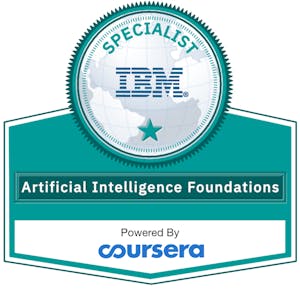Description
You'll learn the fundamentals of machine learning and the business applications of artificial intelligence across industries. You will learn what strategic questions to ask and how to formulate proposals when evaluating opportunities to embed machine learning processes and artificial intelligence technology into a corporate strategy through practical case studies. Finally, in the capstone project, you will create an AI-powered strategy that can be implemented in your own business.
Syllabus:
Course: AI for Business Leaders
The Paradigm Shift
- Understand how probabilistic reasoning is applied to machine learning
- Understand key terms and components involved in machine learning approaches, such as: algorithm, model, training, feature, test set, training set, and ground truth dataset
- Develop ideas for machine learning and AI use cases for a business
- Create before/after storyboards and use them to evaluate the feasibility and impact of an ML/AI use case
The Math Behind the Magic
- Differentiate between how the five “V’s” of data (velocity, volume, variety, veracity, value) affect a ML model
- Understand how information about the five “V’s” of data impacts the potential and feasibility of an ML/AI use case
- Distinguish between classification, regression, optimization, and simulation in ML/AI applications
- Understand the basics of predictive modeling and the differences between classification and regression
- Understand the basics of optimization and the relationship between optimization and simulation
- Become familiar with key terms and concepts of deep learning, and how it can be applied to predictive modeling
- Learn how reinforcement learning models can be applied to the most complex optimization scenarios
Architectures of AI Systems
- Understand the importance of machine learning system architectures and their various components
- Distinguish between the applications of various machine learning capabilities, including classifiers, regressors, optimizers, simulators, policy learners, and segmenters
- Differentiate between the capabilities of natural language processing, voice/speech processing, and computer vision
- Build machine learning system architectures for a digital channel chatbot, negotiation engine, and visual classifier
Working with Data
- Learn the importance and potential costs of labeling data for supervised learning
- Understand AI infrastructure requirements, and how to overcome common hurdles in implementing it
- Evaluate data readiness for implementation of particular ML/ AI capabilities in a business context, and use this to assess feasibility of use cases.
Accuracy, Bias, and Ethics
- Define reasonable machine learning model accuracy and how it can change over time
- Understand why accuracy is only one measure of machine learning model performance and when, how, and why other metrics are commonly used
- Learn how to to avoid underfitting and overfitting when developing an ML model
- Apply ethical considerations and frameworks to make machine learning model design decisions that are ethically sound
Gathering Feedback
- Learn how to build surveys and conduct interviews to solicit feedback on prototypes
- Identify various stakeholders inside and outside an organization to provide feedback in an iterative design process
- Analyze results of feedback from stakeholders to inform evaluation and prioritization of use cases
Thinking Bigger
- Learn how to begin implementing AI use cases with small learning experiments
- Build a roadmap deploying machine learning applications that strategically complement one another
- Create a proposal integrating use cases into a transformational business story
Project: Deliver a Machine Learning / AI Strategy
- Based on an evaluation of various AI-enabled use cases, use all of the skills learned throughout the lessons to develop an ML/AI strategy that is technically feasible and highly impactful on the business.
Capstone Project: Deliver a Machine Learning / AI Strategy
Capstone Work
- Confirm the need to incorporate machine learning/artificial technologies in the business by envisioning a future state and storyboarding use cases of how various business processes might be evolved.
- Analyze the proposed use cases’ potential for success by assessing the characteristics of the data sources needed.
- Create mock architectures for a subset of these use cases and assess readiness for implementation of each AI/ML capability you are considering.
- Take into consideration a variety of operational concerns including ethics, stakeholder implications, and long term costs to finalize your view of business impact versus technical feasibility
- Create a strategic AI and machine learning proposal that is technically achievable and highly impactful based on the synthesis of conclusions drawn throughout the project’s process.








